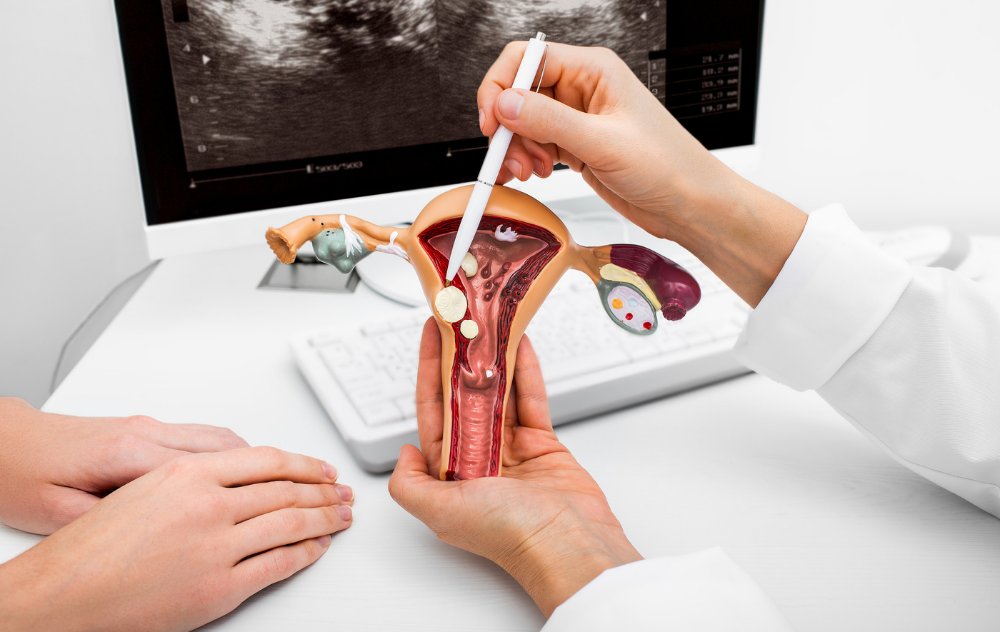
FIBROIDS
FIBROIDS
Fibroids are non-cancerous
growths that develop in or around the womb (uterus). The growths are made up of muscle and fibrous tissue, and
vary in size. They're sometimes known as uterine myomas or leiomyomas.
Fibroids can shrink in some people after menopause. This happens because of a decrease in hormones. When the fibroids shrink, your symptoms may go away. Small fibroids may not need treatment if they aren’t causing any symptoms.
There are
various types of fibroids. The types differ depending on their location in or
on the uterus.
- Intramural fibroids: Intramural
fibroids are the most common
type. They appear within the muscular wall of the uterus. Intramural
fibroids may grow larger and can stretch your uterus.
- Subserosal fibroids: Subserosal fibroids form on the outside
of your uterus, which is called the serosa. They may grow large enough to
make your uterus appear bigger on one side.
- Pedunculated fibroids: Subserosal fibroids can develop a stem,
a slender base that supports the tumor. When they do, they’re known
as pedunculated
fibroids.
- Submucosal fibroids: These types of tumors develop in the
myometrium, the middle muscle layer of your uterus. Submucosal tumors
aren’t as common as other types.
- Cervical fibroids: Cervical fibroids develop on the cervix, which connects the uterus to the vagina. They’re also rare.
-
Your symptoms will depend on the number of tumors you have as well as their location and size. For instance, submucosal fibroids may cause heavy menstrual bleeding and trouble conceiving.
If your tumor is very small or you’re going through menopause, you may not have any symptoms. Fibroids may even shrink during menopause and after menopause. This is because your estrogen and progesterone levels drop during menopause. These hormones stimulate fibroid growth.
Symptoms of fibroids may include:
- Heavy bleeding between or during your periods
It’s unclear why fibroids develop. A couple of different factors may influence their formation:
- Hormones: The ovaries produce estrogen and progesterone. These
hormones cause the uterine lining to regenerate during each menstrual
cycle and stimulate the growth of fibroids.
- Family history: Fibroids may run in the family. If your
mother, sister, or grandmother has a history of this condition, you may
develop it as well.
- Heavy bleeding between or during your periods
